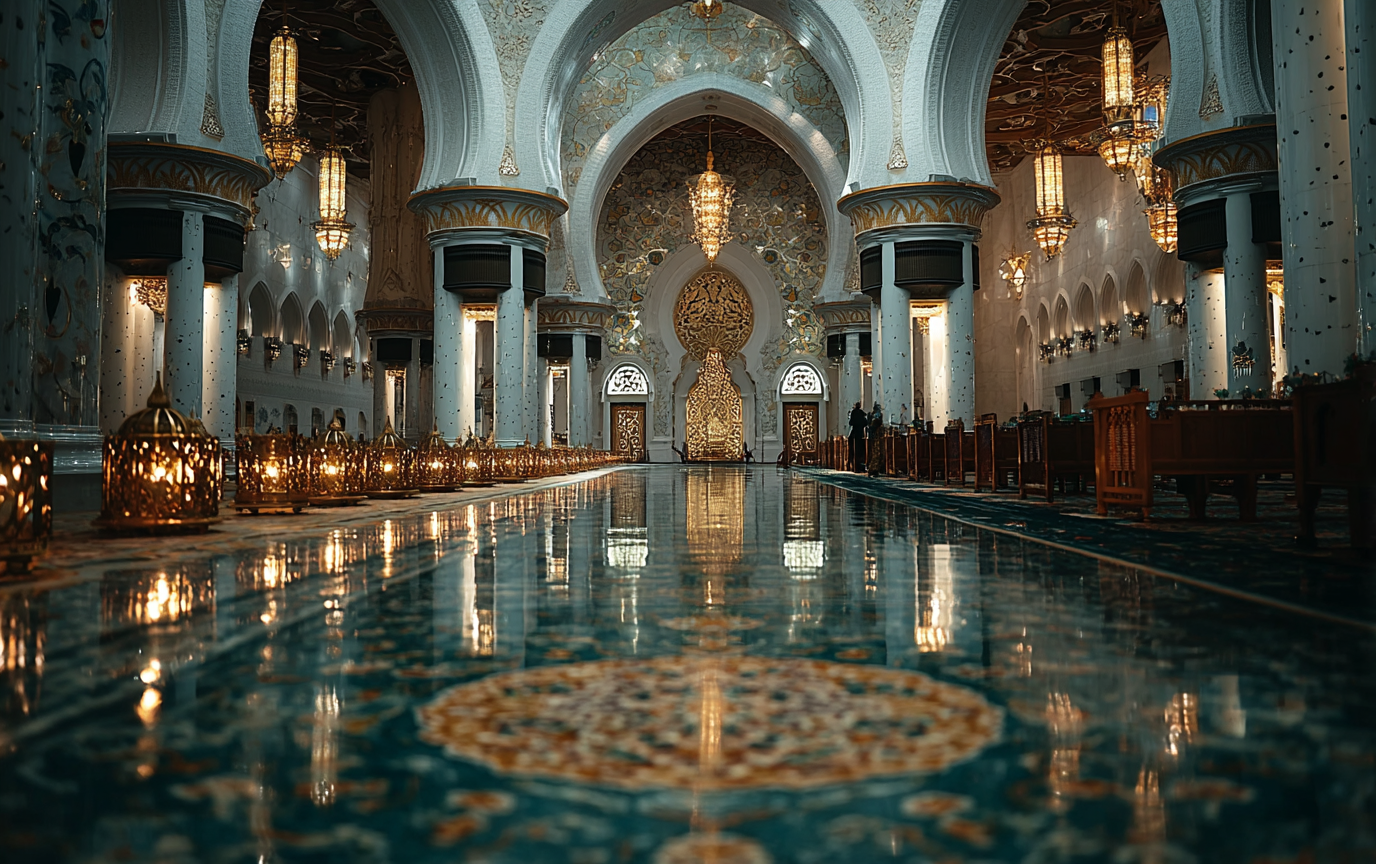When traveling, we often embark on a journey not just through miles, but through the very fabric of human experience—the stories, traditions, and beliefs that shape our world. One of the most profound ways to do this is by visiting religious sites. Walking through the solemn corridors of ancient cathedrals or gazing at the intricate carvings of temples, you can feel the weight of generations of devotion. But with that privilege comes a profound responsibility: to respect religious sites and the sacred traditions they represent. As we navigate these precious places, it is essential to approach them with an open heart and a thoughtful mindset. So, how can we ensure that our visits to these hallowed grounds are both enriching for ourselves and respectful to those who hold them dear?
Finding Your Footing: The Essentials
Traveling to religious sites requires more than just planning your route; it calls for a deep dive into the customs that surround these spaces. Think of it as a dance—one where knowing the steps can take your experience from awkward to awe-inspiring.
Dress Code: A Silent Language of Respect
Imagine stepping into the soaring heights of a cathedral in Florence, where the sunlight spills through stained glass, casting colorful reflections on the polished stone floors. The first thing you’ll want to do is blend into the beauty of your surroundings, and this starts with dressing appropriately. In many religious sites, modest attire is not just a guideline; it’s like a code of conduct.
- Cover Your Shoulders and Legs: Whether it’s a stunning Greek Orthodox church or a serene Buddhist temple, covering your shoulders and knees shows respect. Malabar Beach in Kerala taught me this lesson the hard way—distracted by tropical allure, I found myself turned away at the door of a revered temple. So, do the prep work; bring a shawl or a scarf.
- Footwear Etiquette: The culture of removing shoes before entering sacred spaces is prevalent in many traditions. In Japan, the thrill of slipping off my sandals before entering a peaceful Zen garden created a moment of intimacy with the warmth of the land beneath my feet. Wearing easily removable footwear may save you time and hassle—especially if you’re in a hurry to witness that breathtaking altar.
Head Coverings: Tipping Your Hat, Literally
As you approach the striking domes of a mosque in Istanbul or the vibrant bazaars of Jerusalem, consider the significance of head coverings. In many faiths, covering one’s head is a gesture of humility.
- Gentle Reminder: Before walking through grand entrances, remind yourself to keep a hat or scarf handy. I once stumbled into St. Peter’s Basilica, realizing too late my sunhat wasn’t suitable for entry.
- The Other Side of the Coin: Conversely, in many Christian churches, you’re expected to remove your hats out of respect. It’s those small gestures that illustrate your recognition of the site’s importance.
Essential Guidelines: Deepening Understanding
Traveling to religious sites can be transformative, but understanding local laws and customs is a cornerstone of responsible travel. This building of respect often stems from education—yours and those around you.
Silence and Reflection: The Whisper of Serenity
Every religious site carries with it an aura of serenity, urging visitors to pause and reflect. The soft echo of prayers in a Hindu ashram or the gentle whisper of confessionals in a Catholic church can touch the soul.
- Practice Silence: As I sat in the reflective calm of a Buddhist temple in Chiang Mai, I was awed by the reverent silence that enveloped us. It allowed me to connect deeply with the moment, enhancing my experience. Maintaining silence during your visit honors that sacred atmosphere.
- Educate the Young: If you’re traveling with children, ease them into the importance of quietude—like the gentle practice of placing fingers on lips to signify ‘hush’. The quieter we are, the louder our appreciation becomes.
Always Ask: Permission is Key
Before stepping into a revered area or attempting to capture a poignant shot, remember the paramount importance of obtaining permission.
- Respect Boundaries: One rainy afternoon while visiting a remote chapel in the Cotswolds, I was intrigued by the locked doors of a private prayer room. While my instinct was to explore, a quick glance at the posted sign reinforced the wisdom of respect. Only after knocking and receiving a smile and nod from the keeper could I step inside.
- Private Properties: A lesson learned on the lush landscapes of a private monastery in the Alps played out when I was firmly turned away—turns out, respecting the wishes of those who hold a place sacred leads to deeper connections and future access.
Lasting Connections: Cultural Sensitivity Matters
The threads of each culture weave a rich tapestry that binds communities to their spiritual nests. As a traveler, immersing yourself in that tapestry means recognizing your role as a guest, not an intruder.
Leaving Politics Behind
Religious sites often carry the weight of history—a history shot through with struggle, strife, and beauty.
- Finding Common Ground: After years of reporting on conflicts in the Middle East, I stepped into the vibrant atmosphere of a Palestinian church, where laughter and shared prayers united individuals across divides. In that haven, politics were cast aside; merely be present and human.
Understanding History
Educating yourself about the stories that reside within these walls infuses your visit with meaning.
- Beyond the Surface: When I learned about the years of dedication needed to carve the intricate designs of the temples at Angkor Wat, I felt the weight of each chisel within my own hands. Make an effort to read up before you go; understanding the history will allow you to feel the heartbeat of the place.
A Journey Enriched
As you traverse the diverse landscapes of our planet, allow your feet to guide you into sacred spaces filled with age-old traditions and heartfelt prayers. Each moment spent in these religious sites opens a window to a world of belief and culture that will forever change your perspective.
When we respect religious sites, we elevate our travels from mere sightseeing to a truly transformative experience. It’s not just about being an observer but an active participant in the shared human experience. So, remember to dress with care, cultivate silence, and envelop yourself in local customs—therein lies the beauty of your journey. Keep the conversation alive within you; the world is waiting, eager for your next venture into its spiritual embrace.
Whether you are a seasoned traveler or stepping into your first sacred site, remember, to tread lightly is to connect deeply.
Want to stay updated on the latest travel tips? Check out our Travel Tips section: Travel Tips! Looking for lifestyle inspiration? Explore our Lifestyle category, and discover amazing destinations! Connect with us on YouTube, or follow our adventures on Instagram and Pinterest.
Boost your adventure with these guides:
- How to Book the Best Food Tours in 2025.
- Best Boutique Hotels in Tokyo for 2025
- Best Budget Hostels in Europe for 2025
- How to Understand Middle Eastern Hospitality
- Ultimate Guide to Packing for a Cruise Vacation
Happy travels, dear friends; may your journeys be blessed with respect and mindfulness.













